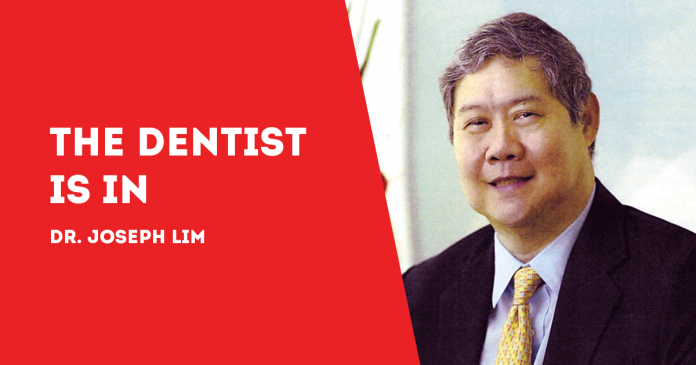
(By Dr. Joseph D. Lim and Dr. Kenneth Lester Lim, BS-MMG, DDM, MSc-OI)
ARE DENTAL fillings on the way out? Not really.
Still, science is now looking at growing replacement teeth.
That’s easier said than done. Dental enamel, the outer coat of teeth, doesn’t grow again once it is damaged. Which is why ceramics, metals and resins are used by dentists to repair tooth cavities and damaged enamel.
Stem cells may have the answer.
Stem cells are the only cell that has the capability to make new cells. These daughter cells form new stem cells or specialized cells with specified functions.
Specialized cells include blood cells, brain cells, heart muscle cells or bone cells. No other cell in the body has the natural ability to generate new cell types.
This promise of making new cells are exciting to scientists who want to make dental stem cells in the laboratory. If that were to happen, tooth enamel and even a whole tooth could be replaced by new cells derived from stem cells.
Dentists are looking into the future because they want to improve current treatment methods, according to webMD.
“A tooth that is treated with a biological as opposed to an inert therapeutic has the potential to remain healthier and more resilient,” says Dr. Ophir Klein, MD, PhD, Executive Director of Cedars-Sinai Guerin Children’s and an Adjunct Professor at the Schools of Dentistry and Medicine at the University of California, San Francisco. “It seems plausible to me that in our lifetime, we will have stem cell-based therapies to treat dental disease.”
Now, a three-dimensional or 3D model of human dental stem cells are on the drawing board, so to speak. The 3D model will be the future of teeth, according to scientists.
“It would be a great advance in the field if stem cells could be used to repair cavities or treat other oral health issues,” webMD quotes Dr. Hugo Vankelecom, PhD, a stem cell researcher at the University of Leuven in Belgium.
Dr. Vankelecom is the senior author of a study detailing the use of dental stem cells and published in the journal Cellular and Molecular Life Sciences.
The stem cells come from the dental follicle, the tissue that surrounds the teeth. The follicle is used to make the 3D model to generate more dental stem cells in the laboratory.
“The tooth provides an excellent source of stem cells,” Dr. Vankelecom says. His research team grow the stem cells and produce more.
It’s possible – in theory, at least –for scientists to source dental stem cells from teeth that have been lost. To prevent the stem cells from losing their capability to regenerate, they are frozen then preserved, Dr. Vankelecom says.
This is where stem cell “banks” come in. It is a cold storage version from where stem cells are “deposited” then “withdrawn” depending on the needs of dentists to restore lost or broken teeth.
“Success in the clinic will depend on the ease of collection and biobanking, the cost, and the eventual quality of repair,” Dr. Vankelecom says. “These cells could be applied to personalize dental treatments.”
Still, the promise lies very much ahead in the future. So much research and development have to be conducted before dental stem cells get out of the laboratory. To determine safety and effectivity, clinical trials will have to be made before putting the technology on the dental chair and fix cavities and damaged teeth.
***
Dr. Joseph D. Lim, Ed. D., is the former Associate Dean of the College of Dentistry, University of the East; former Dean, College of Dentistry, National University; Past President and Honorary Fellow of the Asian Oral Implant Academy; Honorary Fellow of the Japan College of Oral Implantologists; Honorary Life Member of the Thai Association of Dental Implantology; and Founding Chairman of the Philippine College of Oral Implantologists. For questions on dental health, e-mail jdlim2008@gmail.com or text 0917-8591515.
***
Dr. Kenneth Lester Lim, BS-MMG, DDM, MSc-OI, graduated Doctor of Dental Medicine, University of the Philippines, College of Dentistry, Manila, 2011; Bachelor of Science in Marketing Management, De la Salle University, Manila, 2002; and Master of Science (MSc.) in Oral Implantology, Goethe University, Frankfurt, Germany, 2019. He is an Associate Professor; Fellow, International Congress of Oral Implantologists; Member, American Academy of Implant Dentistry and Fellow, Philippine College of Oral Implantologists. For questions on dental health, e-mail limdentalcenter@gmail.com./PN

